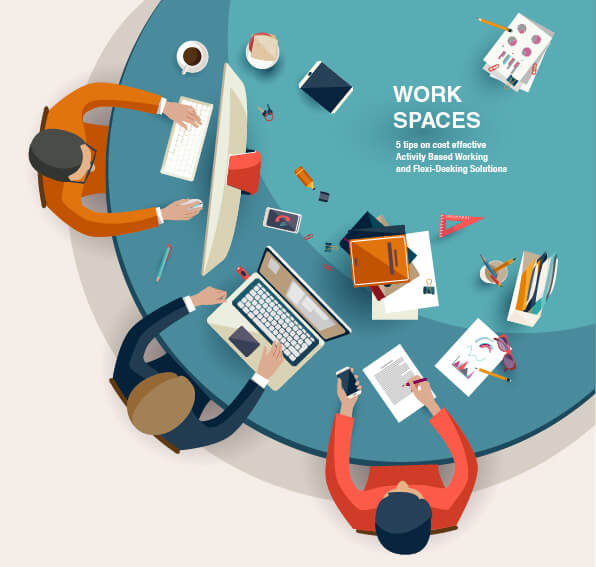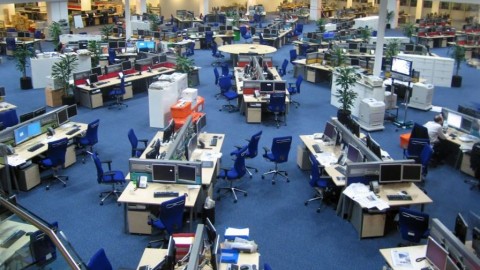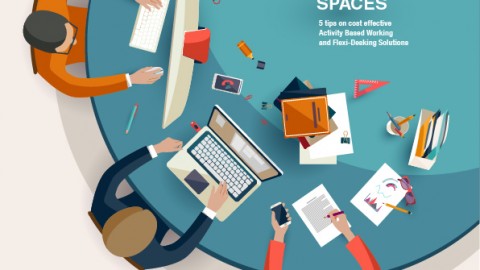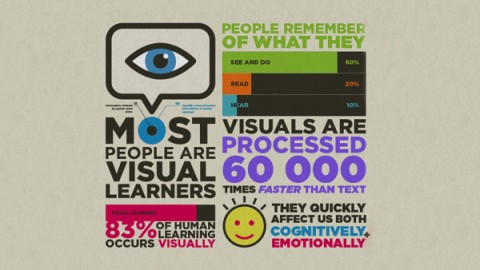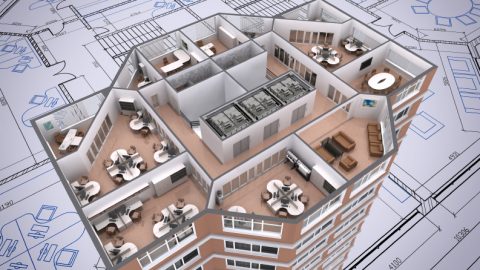Tip #2 – Finding your solution
5 Tips on cost effective Activity Based Working and Flexi-Desking solutions
Welcome to our series of tips on how to move your workplace to flexi-desking or activity based working (ABW). Tip #1 explained why its important to know your space before you start your move.
Tip #2 is about how to find the right solution to assist you in moving towards ABW.
There’s no such thing as the ‘standard’ business with a ‘standard’ office. With such a wide range of businesses operating through varied office locations of all shapes and work styles, your needs are unique. Some staff stay at their desks all day. Some staff are on the road. And some are in meetings, working with clients or get in and leave early each day to pick up the kids.
Your business may be experiencing dynamic and rapid growth or perhaps it’s more sustainable and static in nature. You may have a budget and mandate from the Executive to cut costs, improve office culture and ultimately productivity through a better work environment. But after trying a few Google searches, looking for guidance on the best way to move forward – you come up short.
One thing is certain, you are already involved in the space management cycle. Moving desks, running out of space, trying to move or wanting others to move is now definitely part of business as usual (BAU). Managing this cycle in a simple, quick and effective way is the real challenge.
There is no established solution to help us transition to a flex-environment. This is due to the varying requirements from different business. But we can offer you some tried and tested guidance on the key things to take into account.
Set up a trial
The next step, once you understand your space, is to set up a flexi-desking trial. Moving to flexi-desking is the first step to moving to ABW. And starting with a trial is the best way to start the cultural transition towards wide-spread flexi-desking.
Before you set up the trial, we want to stress how important it is to know what and who makes up the workspace – you need to know the desks and spaces you have to work with, which staff won’t be suitable (for example, those with unique needs or workstation set ups) and so on.
Use the 70 / 30 Rule to support your trial justification
Sick leave, Annual Leave, Personal Leave, Carers Leave, Working out of office, Working from home, Offsite meetings, Part time, Casuals, Contractors… the list goes on!
Recognise is the 70 / 30 rule: For most businesses with a headcount around 100 and up, a general rule of thumb is that at a minimum, 70% of your staff will be in the office and that means only 70% of your work space will be used on any given day.
The outtake is that in most cases, 30% of your space is not used. This gives comfort that when you set up a trial and when you move to full blown flexi-desking, you will have the desks and space available to do so and no staff will be wandering around desk-less!
Create a stepping stone
To gain traction for your trial space, while long term you can set your sights to 70% desk utilisation, you can start to journey small at 90% desk utilisation (or 95% if you have to!). This means if you have 100 staff, you want to find 5-10 desks that will be used for flexi-desking only.
A stepping-stone of 90% desk utilisation would be a milestone and creates sufficient breathing room to transition into more flexible environments. If you have already achieved this, well done – it’s time to work your way towards 70%, again in small increments following the same guidelines set our in this article.
If you’ve read and followed our first article, you should have sufficient knowledge of your work spaces. You can now find 5-10 candidates for a sample trial of flexi-desking. It won’t be easy and you may find yourself with only 5 candidates – but this is still a better option than none. We recommend no less than 5.
What to look for in candidates
It’s hard to know where to start, so here’s a some help to get you underway.
You will want to look for staff that:
1. Don’t have special software on workstations
Any staff requiring unique software to be installed on their workstation are not the most suited candidates for a small trial. These are usually tech staff like IT and developers or creative staff like designers and artists.
Who to look for: sales, marketing, customer support, legal, comms, management staff who don’t have to be at a particular desk.
2. Work offsite or aren’t full time staff
Staff continuously away from their desks will be prove to be the best candidates for hot desking
Who to look for: contractors, temps, casuals, part-timers
Once you find your candidates then stay tuned for our next article where we will highlight the exact steps and checklists to help you get started in moving to a better environment
Next week – Tip #3 One step at a time


